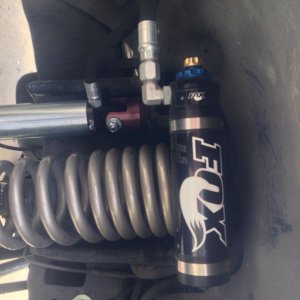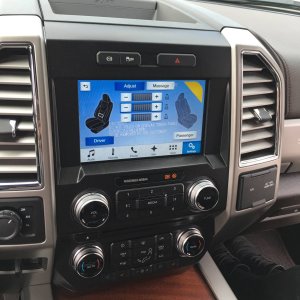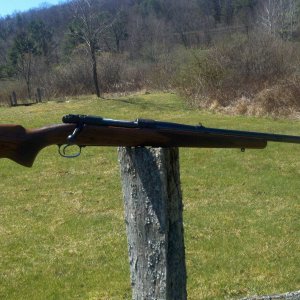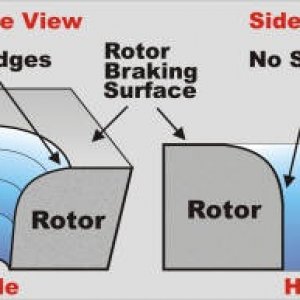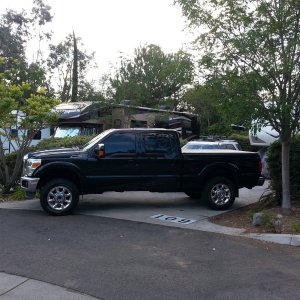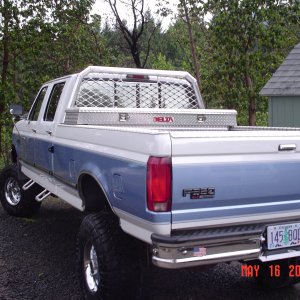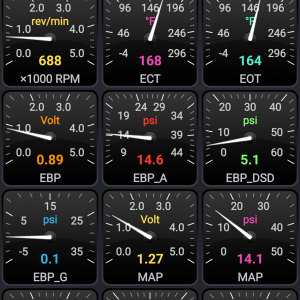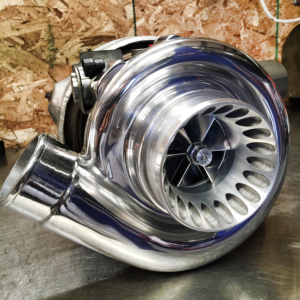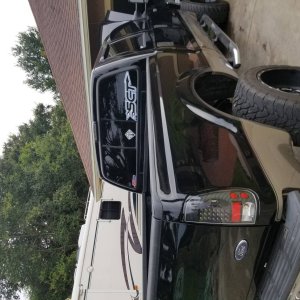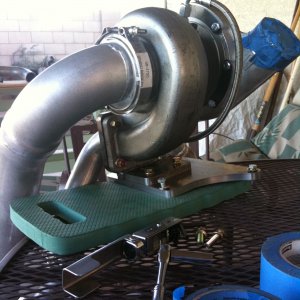You are using an out of date browser. It may not display this or other websites correctly.
You should upgrade or use an alternative browser.
You should upgrade or use an alternative browser.
OBS Crew cab PIC THREAD
- Thread starter OBS>SD
- Start date
97stoker350
Active member
More details on this setup please
97stoker350
Active member
everything... lol whatever you feel like telling thats a sweet setup to say the least. BUT how does it ride is the real question
Well it started because I hated how obs body lines never line up because the weak frames and stiff suspension. So I designed a subframe that went from about the drivers seat to the front of the rear springs. I knew I'd need some sort of suspension now that my frame didn't flex so I designed my front suspension. It's got 12" King coilovers, sky mfg cross over knuckle/high steer arm and a WFO truss. Everything else I made, as far as link mounts and brackets and whatnot. The radius arms are 60" long and perfectly square with each other as are the drag link and trac bar. You can cycle the suspension all 12" and the steering wheel doesn't move at all. It does ride very well (the springs are 500 over 600) but it does have a ton of front end lift/dive on accel and decel. I need to pull everything off and get it powder coated because one winter in north Dakota has turned all my nice painted parts in balls of rust.
shmoozer
Active member
- Joined
- Jul 31, 2012
- Messages
- 1,143
- Reaction score
- 1
Did you have a build thread over on Pirate?
-KCCO-
-KCCO-
shmoozer
Active member
- Joined
- Jul 31, 2012
- Messages
- 1,143
- Reaction score
- 1
You gonna do another thread? I read your first one a couple times lol
-KCCO-
-KCCO-
97stoker350
Active member
Can we get a link to it
97stoker350
Active member
so what is the trick to making the trac bar, radius arms and front end geometry all line up and cycle so good while being stiff enough?
There is a ton of math and science behind the actual design of suspensions but I will just cover the basic idea of a STREET suspension. I like radius arms for street trucks because they are stone age simple and very easy to tune. That is why ford used them for many years on 1/2 tons and in '05 started putting them onto their bigger pickups and also dodge started doing it on their bigger pickups too. They are the perfect compromise of everything a pickup needs to do. In design, make everything that travels in pairs, travel parallel with each other. Meaning make your drag link and trac bar parallel and of equal length when viewed from the front AND top (this is the part 95% of people don't do) so when the radius arms cycle they will not bind and create bump steer. Make your radius arms parallel when viewed from the top so when the trac bar cycles it wont create roll steer. The reason for this is because if they are narrower at the frame like many people design them, like the early broncos and 67-79 F-150s, as the trac bar cycles UP the left side arm gets "longer" in relation to the wheelbase of the vehicle while the right side gets "shorter" and this will ALWAYS create roll steer to the right. The opposite happens upon droop. The length and slope of the arms will create dive or anti dive. I wont get into the math of it but basically it will change if your front end dives upon braking or (if your arms or links are short and steep like on dodges with huge lifts) the body and chassis will try and pass the front axle and create a very uneasy feeling while braking. I like joints, like EMF or Ballistic joints, not bushings, because they are more "fluid" in their movement but they do create more road feel and vibration, this is just personal preference. The stiff ride is 100% dependent on spring and shock choice/tuning if you design your suspension based on those principles. That is the great thing about coilovers though is that trial and error is very easy. I'm sure someone will come here and argue about the radius arms being parallel, but the short answer is that they are wrong. Much of this goes out the window for off-road suspensions but I wont get into that right now.
Strokin572
New member
Just read your thread and you made it look easy enough that I want to do that now LOL awesome work you did on that. I don't know if you ever powdercoated everything but I think white would look awesome on all of the bars.
Thanks, I appreciate it. No I haven't got everything powder coated but I am most definitely getting everything done in white when I get everything done this go-round. I'm in the process of collecting parts to do a drop out Dana 60 in the front and cut it into a short box. Engine wise its getting some 300/200s and a t4 kit along with a zf6. So shes gonna be under the knife for a while here in the near future.
Strokin572
New member
Wanna trade trucks?  That sounds like the ultimate truck. Your thread over there seriously has me wanting to subframe and 4 link mine though. Doubt it will happen but I am really considering it.
That sounds like the ultimate truck. Your thread over there seriously has me wanting to subframe and 4 link mine though. Doubt it will happen but I am really considering it.
It really wasnt that expensive, just time consuming. Mostly you just gotta totally commit to it and park it and do it. I went back and forth quite a bit before I actually pulled the trigger but I am 100% happy I did. Or you could just hire me to build you one. I'll cut you a smokin deal!
Strokin572
New member
The more I think about it though I don't want to lift mine anymore and all I have is a level right now but would I even be able to make the 4 link and everything fit on just a level?
97stoker350
Active member
You'd be better off going with stock 05 suspension if u don't want to lift I'd say
Strokin572
New member
I would love to have the entire subframe with the bars is my biggest thing.
In my opinion, your best bet would be to source an 05+ axle and still build the subframe and do your own radius arms and whatnot. I have no idea what the width is on the radius arm mounts on those axles but it shouldn't be too far off from the OBS frames and unless you are using all the travel of your shocks you wont have that much bump steer, The reason I was so picky about mine is because I wanted to be able to use all 12" of travel. Just think of it like this, no matter what, it wont be as bad as the factory leaf springs! lol

